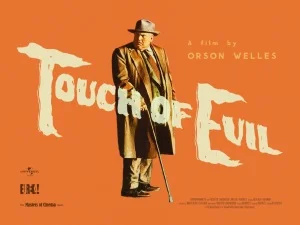by Colin Boyd
There Are No Oscar Snubs
In 1942, Citizen Kane was nominated for nine Academy Awards, winning only for Best Original Screenplay. Because it was perceived as a takedown of the all-powerful William Randolph Hearst (which isn’t totally untrue), the Hearst papers ran a smear campaign against the movie and its wunderkind creator, Orson Welles, in the lead-up to the Oscars. And it worked: The movie was booed whenever its name was called during the ceremony.
When the Oscar nominations were announced this week, there was immediate outcry about what did not receive nominations. “Why Ava Duvernay’s Oscar Snub Matters,” wrote Scott Mendelson in Forbes. “Oscar Snubs: Jennifer Aniston, LEGO Movie, Selma Director, More,” charges a pitchfork-carrying Hollywood Reporter. But what is a snub? Webster’s says it’s to “ignore in a deliberate and insulting way.” So let’s break that down.
Ignore
Did Oscar voters really pretend David Oyelowo did not exist? Or is it more likely that, in a stacked Best Actor category that also did not include Jake Gyllenhaal’s haunting work in Nightcrawler, which was probably better than the overlooked performance everyone is talking about this week, Oyelowo simply did not get the minimum number of votes required to be a nominee?
Deliberate
Reese Witherspoon, who produced two films with Best Actress nominations — her own (Wild) and that of Rosamund Pike (Gone Girl) — saw neither up for Best Picture. Was this on purpose, some sort of punishment not just of Witherspoon but also of the actors, crews, and studios or distributors involved with their production? Or, is it more likely that, even though Best Picture is a broader category than the others in terms of total nominees, neither film received as many nominations as the four obvious front-runners (Boyhood, Birdman, The Grand Budapest Hotel, and The Imitation Game), leaving it fighting for the final few slots along with every other film that did receive a nomination and those that just missed the cut?
Insulting
“Where are the nominees of color,” they’ve been screaming. Well, unfortunately, even though African-American actors and others of color have done much, much better with the Academy Awards over the past decade than during the previous 75 years of the Oscars combined, there were no nominees in a major category this year. No actors, writers, or directors. So what does that say? Is it an open-hand slap in the face to those who did good work this year or is it more a reflection of an industry that still doesn’t make films for urban audiences in a proportional manner? And that, this year, there were not a ton of options for voters to even see. If there’s an insult, and there is, it’s that the studios don’t make enough movies for black and Hispanic audiences that rise above the easy opening weekend haul.
Here’s the deal
There are no Oscar snubs. There are no secret meetings of voters deciding whose work to eliminate because they’re black or a woman or anything else. This first got under my skin with The Dark Knight, a film nominated for nearly every technical award imaginable, won Best Supporting Actor, but was not nominated for Best Picture. The peals of disappointment rang through every message board: “The Oscars hate comic book movies!” This is an extension of the logic that the Oscars hate science fiction, because we haven’t had a space movie win Best Picture.
But think of the size of the conspiracy that would keep The Dark Knight out of a new 10-movie race for Best Picture. There are over 6,000 Oscar voters; they would have to be cagey enough to make sure the Batman movie was in the running in precisely the categories you’d expect but massage their ballots enough to purposely keep it out of Best Picture. Think, for a second, about how silly that sounds.
So, while there’s no good explanation for the absence of The LEGO Movie in Best Animated Feature Film, please remember that votes for anything provide all of the context you’re ever going to get. It’s yes, or it’s no. The assertion that Academy members are out to get this movie or David Oyelowo because he’s black or Reese Witherspoon’s movies because she’s successful enough as an actor and nobody needs her producing anything is asinine and totally unsupportable by the system against which everyone is railing and wailing.
Is there bias at play? Of course. Voting is inherently biased. It’s picking favorites! And there’s every possibility that members vote for names they recognize and admire without seeing every nominee (the list of people who see every eligible film is bound to be very short). But something nefarious, a system that ignores admittedly great work in a deliberate and insulting way? Put down the pipe.










